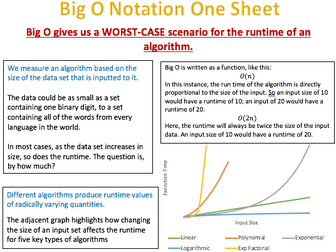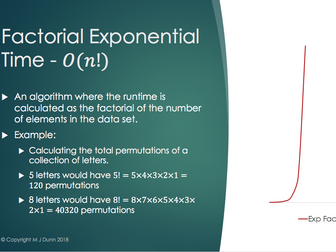
A Level Big O Notation Theory
A presentation comprehensively addressing the topic of Big O.
The requirement for measuring algorithmic complexity is discussed along with multiple different metrics that could be employed to achieve this. Ultimately, the reasoning behind Big O is revealed and pupils guided as to why this metric is the most universally appropriate.
Big O is comprehensively discussed, including how the data set size influences runtime and a range of different forms of Big O.
This includes:
Constant Time
Linear Time
Polynomial Time
Exponential Time
Factorial Exponential Time
Logarithmic Time
In each form, an example algorithm is provided to offer some context to the scenario. A visual representation of runtime with increasing data set sizes is also included for each, as is a visual comparison for each of the algorithms.
Finally, the reason why Big O is important is addressed.
There are 30 slides in this presentation, providing theory only. Exercises and run-throughs can be found in other uploads on my account.


